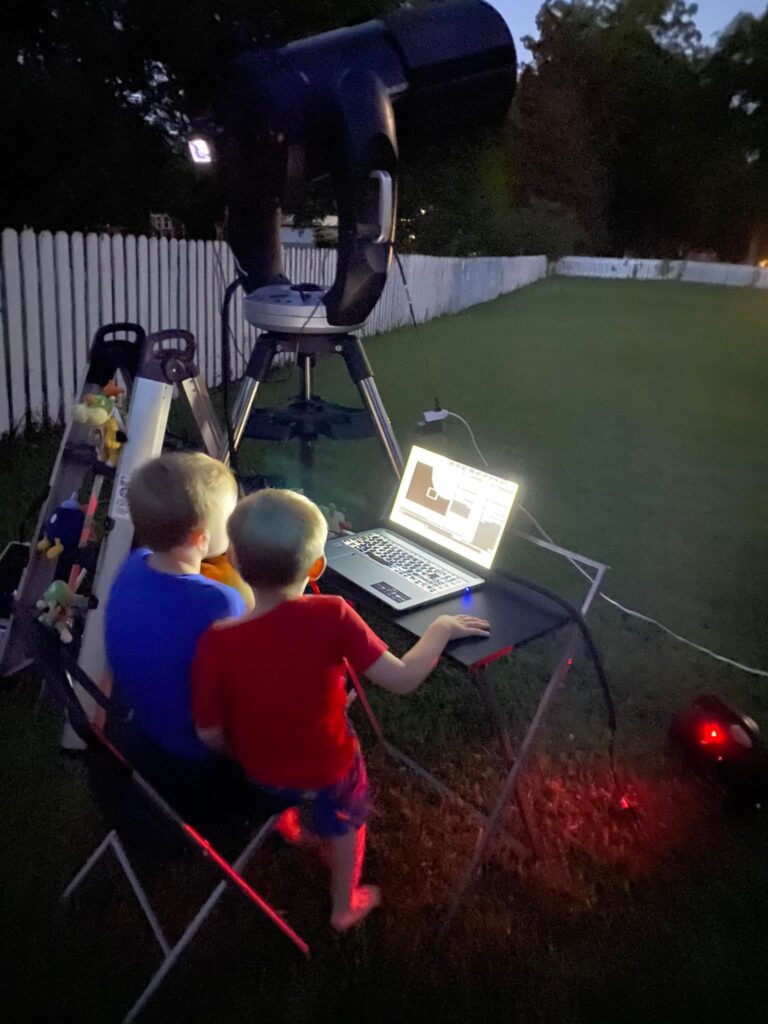
Electronically-Assisted Astronomy (EEA) at its most basic level involves replacing the eyepiece of the telescope with a camera. If you have used your cellphone or camera to capture an image of the night sky and shared that image online you have participated in EEA.
With the accessibility of affordable imaging technology, astronomers must make a choice. Is the observing process a refuge from the digital world, or do we desire it to be an extension of it? Do we come to the dark to get away from social media and the lures of media consumption, or do we crave to bring that digital community with us?
EEA cannot duplicate the wonder of that ancient light hitting your eyes. Much of the rest of the outdoor viewing experience is left intact, however. Having a monitor or cell phone to view an image can be convenient for both you and any co-astronomers or onlookers present.
Those consuming EEA content online will not experience astronomy with all five senses the way an outdoor observer does. Making an observing experience available digitally, however, is inclusive and satisfying in all the maddingly-addictive ways that social media is. Solo observing can be lonely. It feels good to share with others and know you are offering content that is valued.
In the same way that fussing with phone technology and social media can take one out of the moment when enjoying a vacation getaway, so it is with EEA. The motivation is the same–to have a sharable record of your experience. The challenge is also the same–to make sure that the process of capturing the moment does not degrade it. Fussing with cables,settings, and connectivity can spoil the observing experience.
One can make an argument that EEA allows the astronomer to see even more, by taking advantage of the imaging device’s ability to see wave lengths of light our eyes cannot. The camera can overcome the ravages of light pollution by cutting through the haze with long exposures. Post-processing of images can enhance the view otherwise denied us in all but the darkest of skies and seeing conditions. Astronomers and social viewers with physical and visual limitations benefit from the technology.
Learn more about Electronically-Assisted Astronomy (Video Astronomy)
